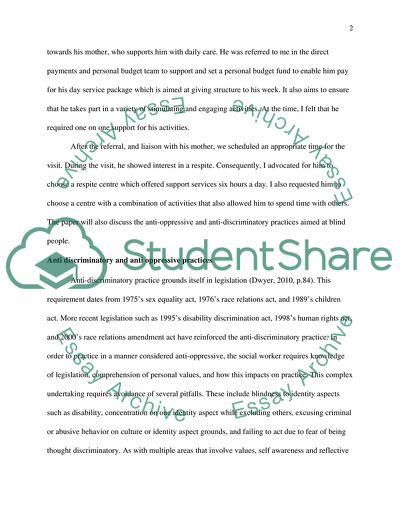Cite this document
(How I Helped a Service User to Make Informed Decisions Essay, n.d.)
How I Helped a Service User to Make Informed Decisions Essay. https://studentshare.org/social-science/1777624-demonstrate-where-you-worked-with-a-service-user-who-is-blind-and-to-make-informed-decisions-only-conclusion-part-is-required
How I Helped a Service User to Make Informed Decisions Essay. https://studentshare.org/social-science/1777624-demonstrate-where-you-worked-with-a-service-user-who-is-blind-and-to-make-informed-decisions-only-conclusion-part-is-required
(How I Helped a Service User to Make Informed Decisions Essay)
How I Helped a Service User to Make Informed Decisions Essay. https://studentshare.org/social-science/1777624-demonstrate-where-you-worked-with-a-service-user-who-is-blind-and-to-make-informed-decisions-only-conclusion-part-is-required.
How I Helped a Service User to Make Informed Decisions Essay. https://studentshare.org/social-science/1777624-demonstrate-where-you-worked-with-a-service-user-who-is-blind-and-to-make-informed-decisions-only-conclusion-part-is-required.
“How I Helped a Service User to Make Informed Decisions Essay”. https://studentshare.org/social-science/1777624-demonstrate-where-you-worked-with-a-service-user-who-is-blind-and-to-make-informed-decisions-only-conclusion-part-is-required.


